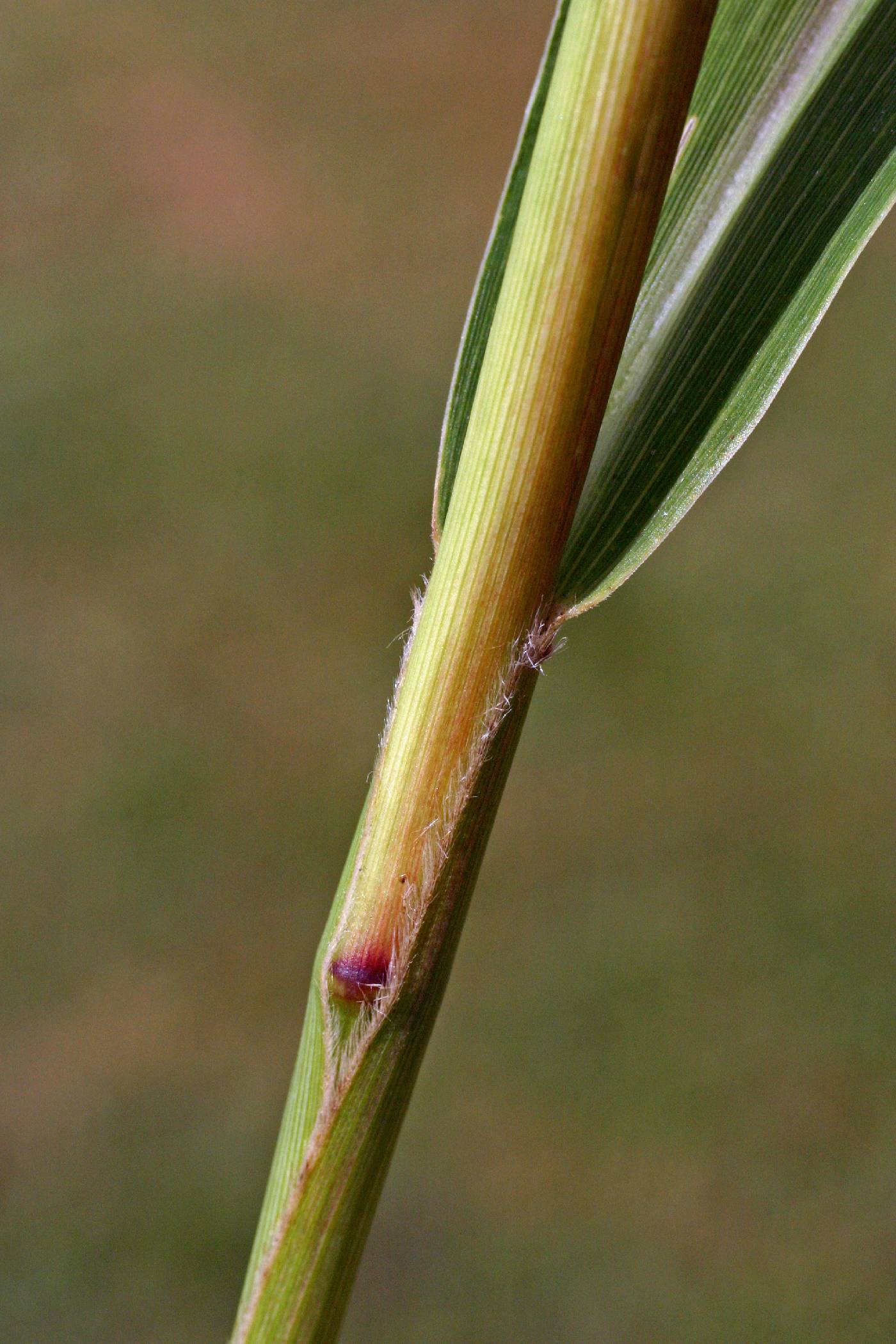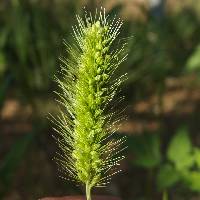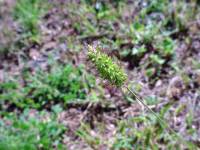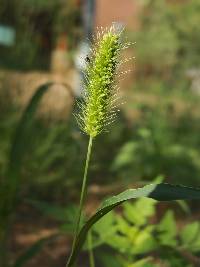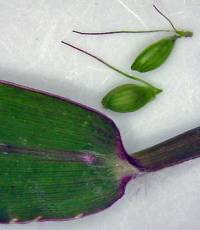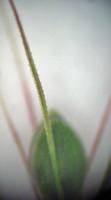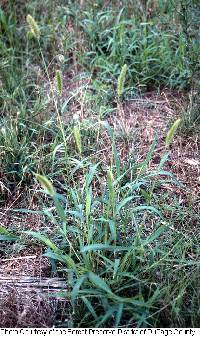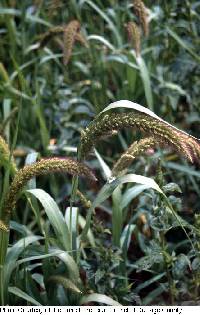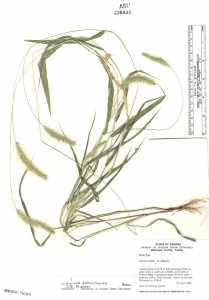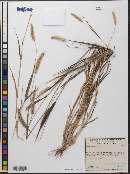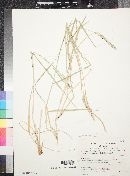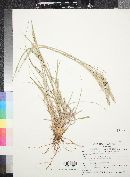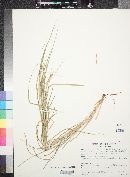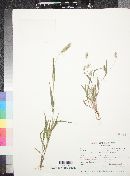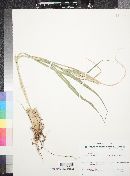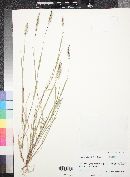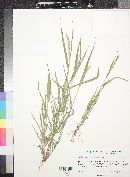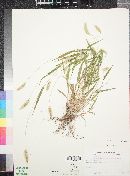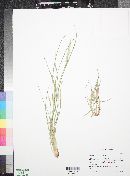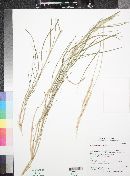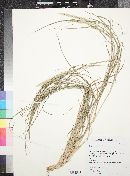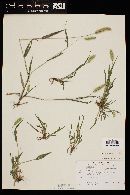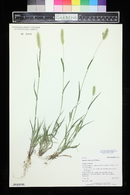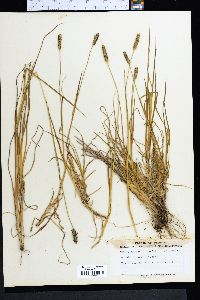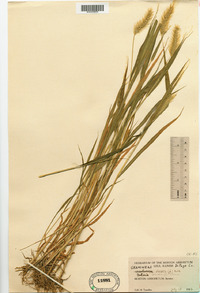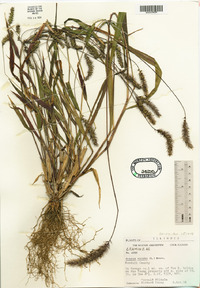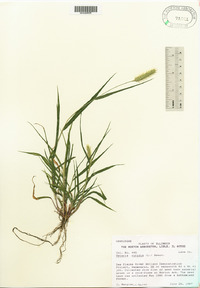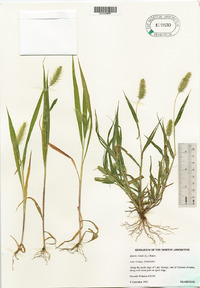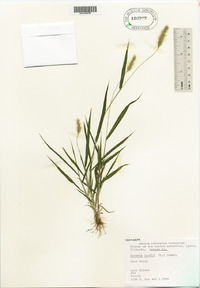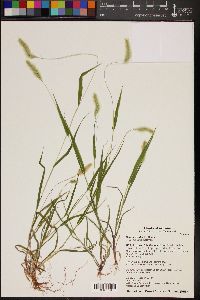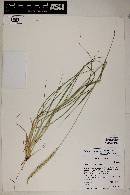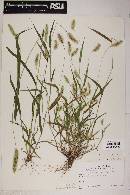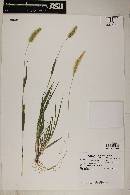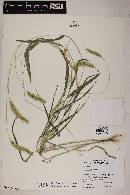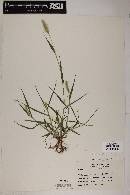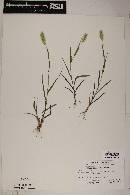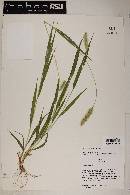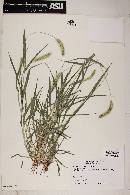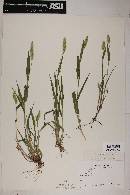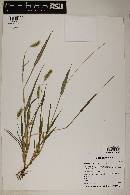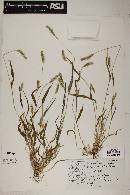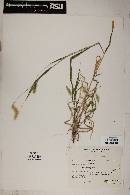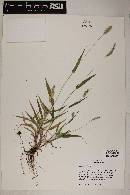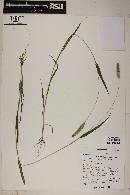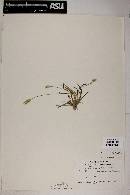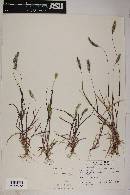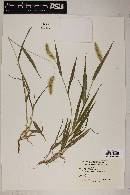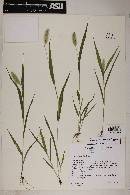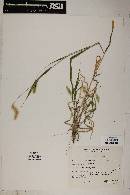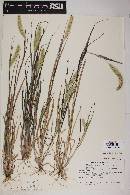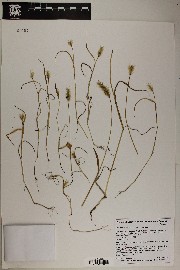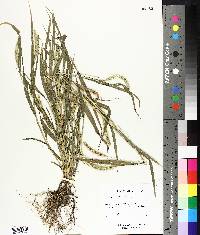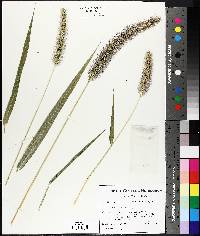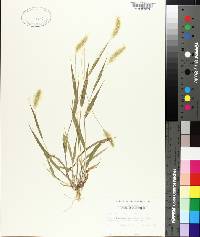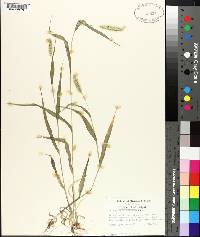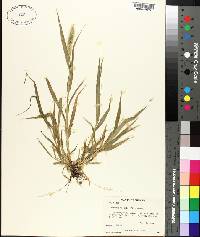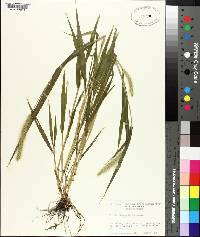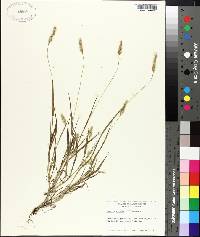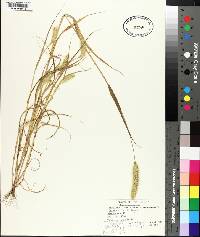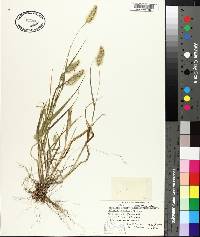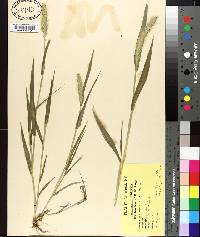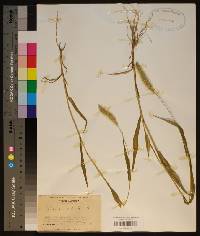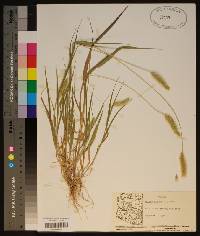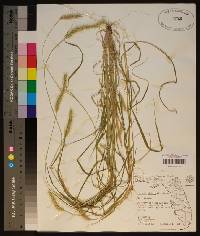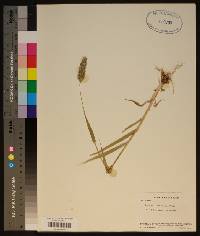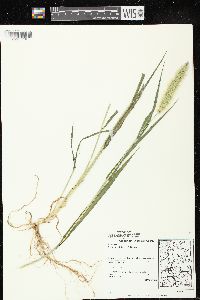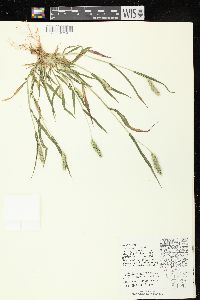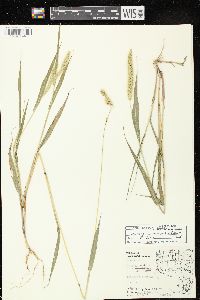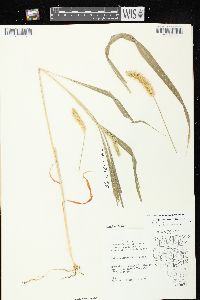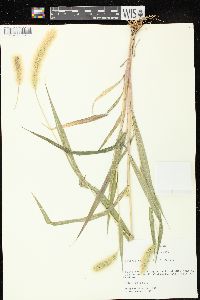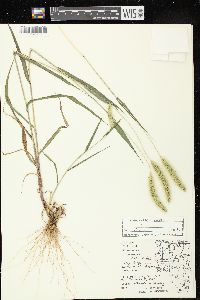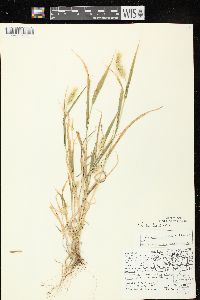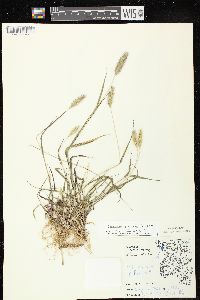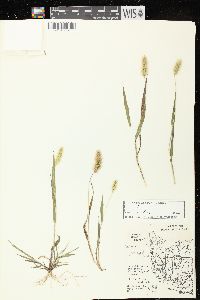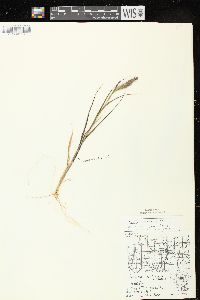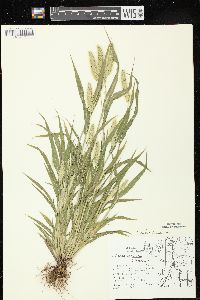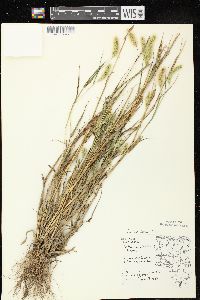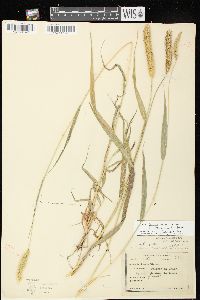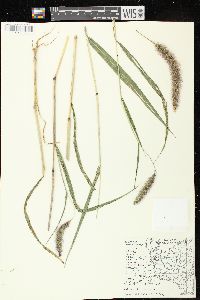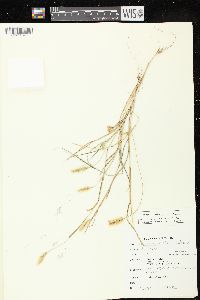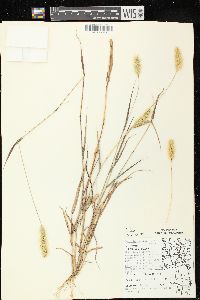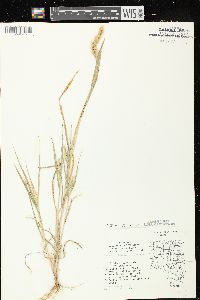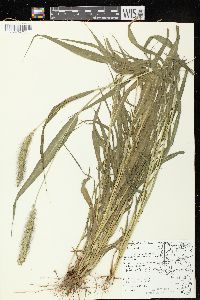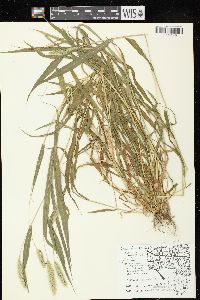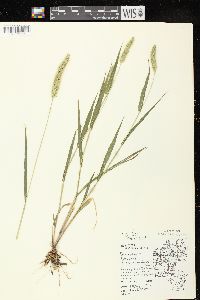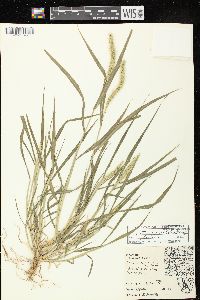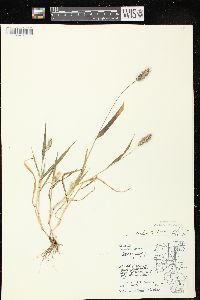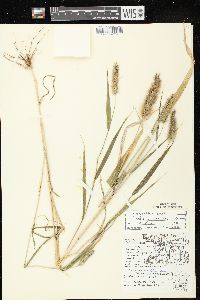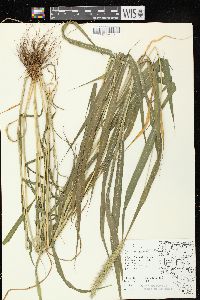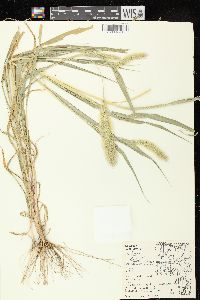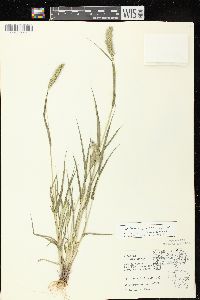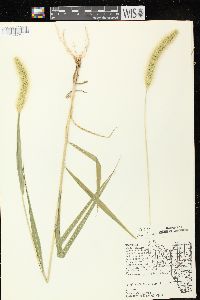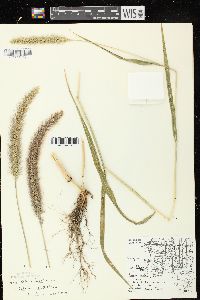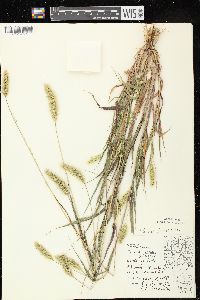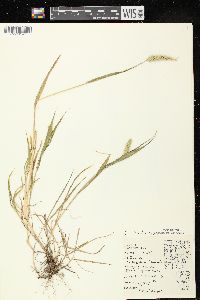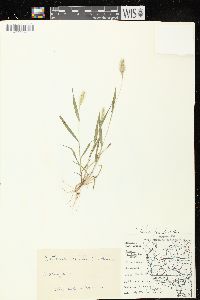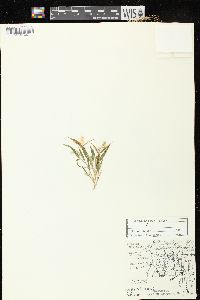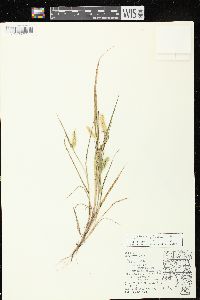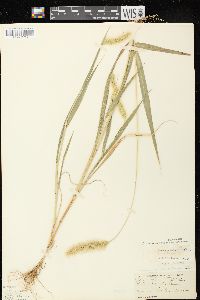Setaria viridis
|
|
|
|
Family: Poaceae
Green Bristle Grass, more...green bristlegrass, bottle grass, green foxtail, pigeongrass, wild millet, Sétaire Verte
[Chaetochloa viridis var. breviseta (Döll) Farw., moreChaetochloa viridis var. minor Farw., Chaetochloa viridis var. weinmanni (Roem. & Schult.) House, Chamaeraphis italica var. viridis (L.) Kuntze, Chamaeraphis viridis (L.) Millsp., Ixophorus viridis (L.) Nash, Panicum italicum var. viride (L.) Körn., Panicum viride var. brevisetum Döll, Panicum viride var. weinmanni (Roem. & Schult.) Kneuck., Panicum viride var. weinmennii (Roem. & Schult.) Asch. & Graebn., Pennisetum italicum var. viride (L.) Körn., Pennisetum viride (L.) R. Br., Pennisetum viride var. brevisetum Döll, Setaria italica subsp. viridis (L.) Thell., Setaria pachystachys , Setaria viridis f. viridis (L.) P. Beauv., Setaria viridis subsp. pycnocoma , Setaria viridis var. pachystachys (Franch. & Sav.) Masamura & Yanagih., Setaria viridis var. robusto-alba M. Schreib., Setaria viridis var. robusto-purpurea M. Schreib., Setaria weinmannii Roem. & Schult., Setariopsis viridis (L.) Samp.] |
Plants annual. Culms 20-250 cm; nodes glabrous. Sheaths glabrous, sometimes scabridulous, margins ciliate distally; ligules 1-2 mm, ciliate; blades to 20 cm long, 4-25 mm wide, flat, scabrous or smooth, glabrous. Panicles 3-20 cm, densely spicate, nodding only from near the apices; rachises hispid and villous; bristles 1-3, 5-10 mm, antrorsely scabrous, usually green, rarely purple. Spikelets 1.8-2.2 mm. Lower glumes about 1/3 as long as the spikelets, triangular-ovate, 3-veined; upper glumes nearly equaling the upper lemmas, elliptical, 5-6-veined; lower lemmas slightly exceeding the upper lemmas, 5-veined; lower paleas about 1/3 as long as the lower lemmas, hyaline; upper lemmas very finely and transversely rugose, pale green, 5-6-veined; upper paleas similar to the upper lemmas. 2n = 18. Setaria viridis resembles S. italica but differs in its shorter spikelets and rugose upper florets, and mode of disarticulation. It is also a more aggressive weed. Annual herb, tufted 20 cm - 2.5 m tall Leaves: alternate, two-ranked. Sheaths sometimes minutely rough, fringed with hairs near the apex. Ligules 1 - 2 mm long, membranous, marginally fringed with hairs. Blades to 20 cm long, 0.5 - 2.5 cm wide, lance-shaped, flat, smooth or rough, parallel-veined. Inflorescence: a terminal arrangement of spikelets (panicle), dense, 3 - 20 cm long, spike-like, with numerous bristles 0.5 - 1 cm long. Axis hairy. Bristles green, rarely purplish, rough. Fruit: a caryopsis, indehiscent, enclosed within the persistent lemma and palea, ellipsoid to nearly spherical. Culm: upright or decumbent, 20 cm - 2.5 m long, round in cross-section. Spikelets: nearly stalkless to short-stalked, about 2 mm long, lance-shaped to ellipsoid. Glumes:: Lower glumes about one-third as long as spikelets, triangular egg-shaped, three-veined, membranous. Upper glumes nearly equal to upper lemmas, elliptical, five- to six-veined. Lemmas:: Lower lemmas slightly longer than upper lemmas, five-veined, membranous. Upper lemmas pale green, hardened, finely wrinkled, five- to six-veined. Paleas:: Lower paleas about one-third as long as lower lemmas, transparent. Upper paleas similar to upper lemmas, hardened, wrinkled. Florets:: Lower florets sterile or male. Upper florets bisexual. Anthers three. Styles two. Stigmas red. Similar species: No information at this time. Habitat and ecology: No information at this time. Occurence in the Chicago region: non-native Etymology: Setaria comes from the Latin words seta, meaning bristle, and aria, meaning possessing. Viridis means green. Author: The Morton Arboretum FNA 2003, Gould 1980, USDA GRIN, Heil et al 2013 Common Name: green bristlegrass Duration: Annual Nativity: Non-Native Lifeform: Graminoid General: Introduced, tufted annual grass with rolled vernation, stems decumbent at the base and ascending above, branching, glabrous, 15-100 cm. Vegetative: Sheaths open, keeled, only slightly compressed, one margin ciliate, often on collar also; blades flat, mostly 4-10 mm broad, 5-20 cm long, gradually tapering to a slender tip, scaberulous, margins wavy; ligule densely ciliate, 1-2 mm long. Inflorescence: Dense, spikelike panicle, cylindrical, 2-8 cm long and 5-8 mm broad excluding the bristles, rarely lobed or interrupted, rounded at the apex; bristles green or purple, antrorsely scabrous, mostly 5-8 mm long, occurring 1-4 at the base of each spikelet, spikelets 2-2.5 mm long; first glume short, second equaling sterile and fertile lemmas; fertile lemmas minutely reticulate or finely rugose, rounded at apex. Ecology: Found in lawns, along roads, waste places, irrigated lands, and disturbed ground from 2,000-8,000 ft (610-2438 m); flowers May-October. Distribution: Native to Eurasia and Africa, naturalized in North and South America. Present throughout the continental US, Alaska, and the southern Canadian provinces. Notes: Setaria spp. have inflorescences with short, mostly contracted branches and single-seeded, hard spikelets subtended by persistent bristles that remain on the plant after the spikelets have fallen. S. viridis is considered to be an aggressively invasive species. Distinguished from the native Setaria grisebachii by virtue of this species having a more densely spicate panicle, where S. grisebachii is loosely spicate. S. viridis can also be mistaken for S. pumila. Both S. pumila and S. viridis can have purple bristles, but the two species can be distinguished by the number of bristles subtending each spikelet. S. pumila has 4-12 bristles below each spikelet, while S. viridis has 3 or fewer. Barkworth et al (2007) list a bristle length of 4-8 mm for both species, but perusal of herbarium specimens shows a trend of S. pumila bristles being at the low end of that range, and S. viridis bristles more often with lengths around 8 mm. Ethnobotany: S. viridis is the wild progenitor of foxtail millet (Setaria italica), an important grain crop in Asia. Etymology: Setaria is from Latin saeta, a bristle or hair, viridis means green. Synonyms: None Editor: SBuckley, 2010, AHazelton 2015 Annual 2-25 dm; sheaths ciliate along the upper margins; blades flat, up to 40 נ2.5 cm, scabrous above, glabrous or scaberulous beneath; infl erect or slightly nodding near the tip, cylindric, the axis hispid and densely villous, the branches not verticillate; spikelets 1.6-2.5 mm; first glume a third the length of the spikelet, 3-veined, the second nearly equaling the spikelet, 5-6-veined; sterile lemma slightly surpassing the fertile one, with a narrow, hyaline palea a third as long; fertile lemma very pale green and transversely very finely rugulose; 2n=36. A cosmop. weed, mostly of temp. regions, found in fields, gardens, and waste places throughout our range. Most of our plants belong to var. viridis, 2-10 dm, with lvs up to 20 cm נ12 mm, the infl 3-10(-15) cm, not lobed. The less common var. major (Gaudin) Peterm. is vegetatively larger, 15-25 dm, with lvs to 40 נ2.5 cm, the infl to 20 cm and somewhat lobulate. It may reflect introgression from no. 6 [Setaria italica (L.) P. Beauv.]. Gleason, Henry A. & Cronquist, Arthur J. 1991. Manual of vascular plants of northeastern United States and adjacent Canada. lxxv + 910 pp. ©The New York Botanical Garden. All rights reserved. Used by permission. From Flora of Indiana (1940) by Charles C. Deam A common weed throughout the state in cultivated and waste grounds and along roads and railroads. It is not as common as the preceding species [Setaria lutescens (= S. pumila)]. …… Indiana Coefficient of Conservatism: C = null, non-native Wetland Indicator Status: N/A |
|
|
|

